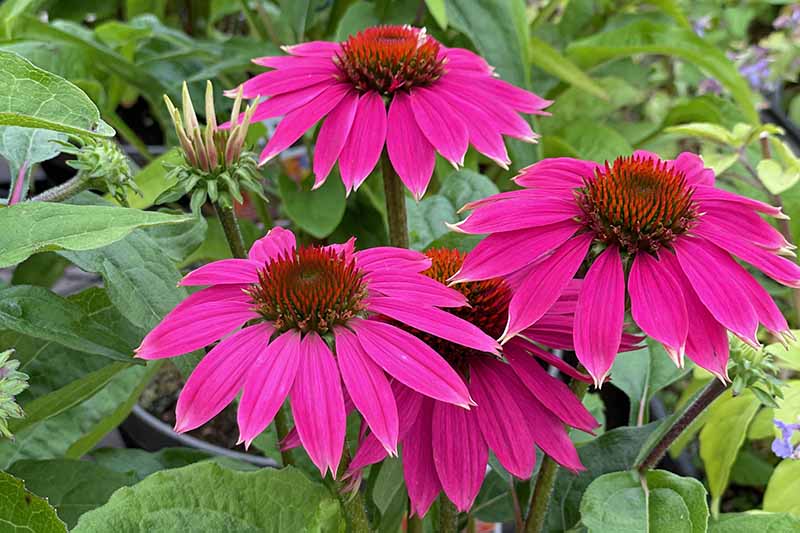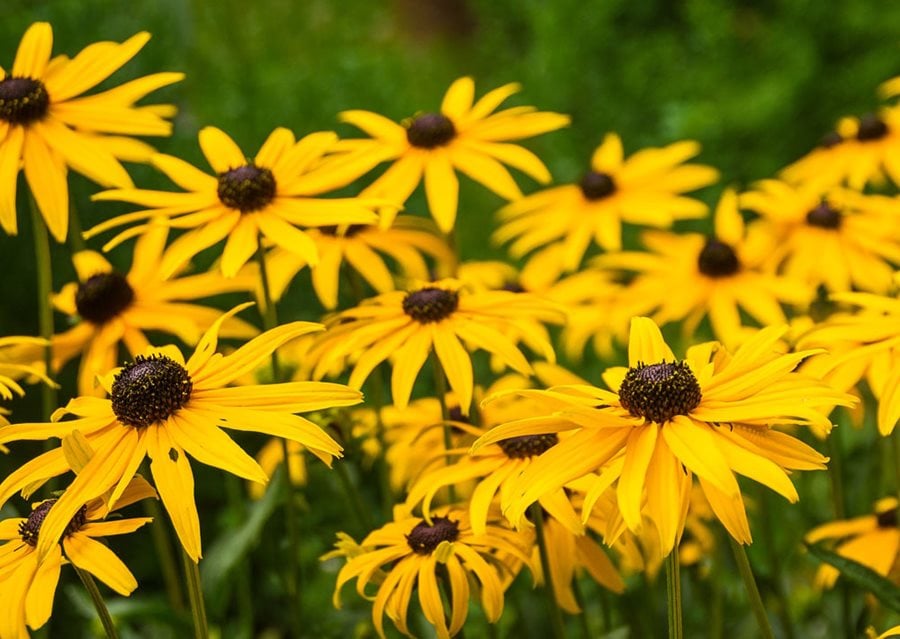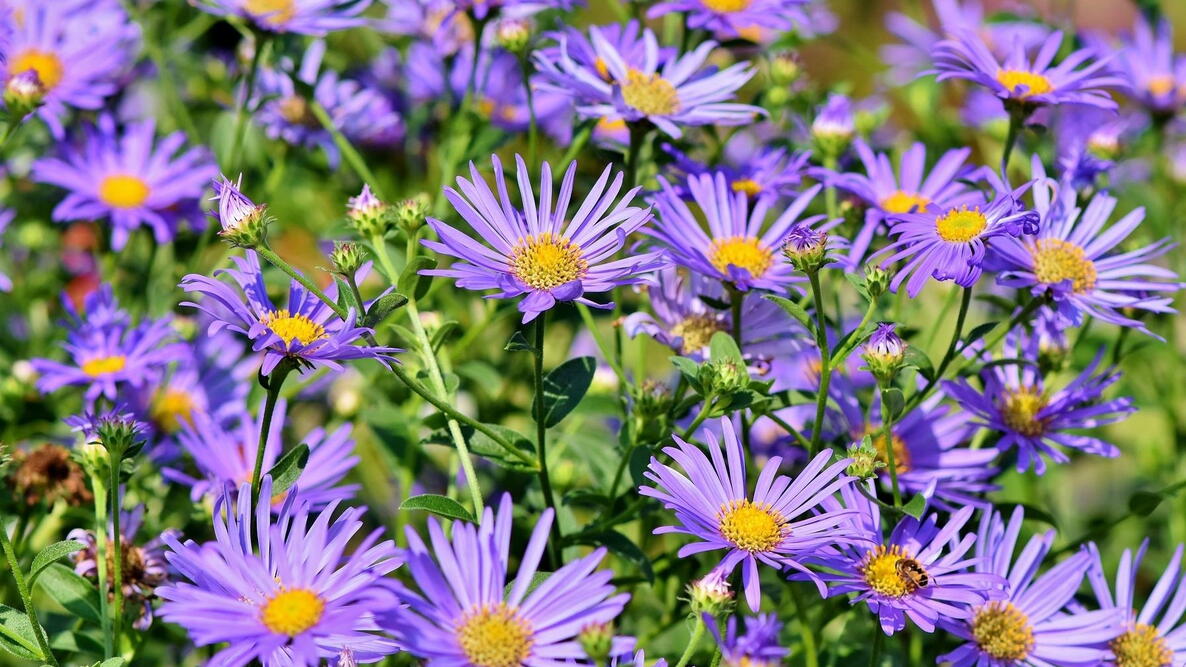Stunning Liatris Companion Plants That Will Make Your Garden Pop
Liatris, also known as blazing star, is a beautiful perennial plant that is native to North America. It is known for its tall, spiky flower stalks that bloom in shades of purple, pink, and white. Liatris is a relatively easy plant to grow and care for, and it can add a touch of elegance and drama to any garden.
One of the best things about liatris is that it can be easily paired with other plants to create stunning garden combinations. When choosing companion plants for liatris, it is important to consider the plant's growth habit, sun requirements, and bloom time. Here are a few of the best liatris companion plants:
- Daylilies: Daylilies are a classic garden flower that come in a wide range of colors. They are easy to care for and bloom for several weeks in the summer. Daylilies make great companion plants for liatris because they have similar growth habits and sun requirements.

- Purple coneflowers: Purple coneflowers are another popular garden flower that is known for its daisy-like blooms. They are easy to grow and care for, and they attract pollinators such as butterflies and bees. Purple coneflowers make great companion plants for liatris because they have similar bloom times and sun requirements.

- Black-eyed Susans: Black-eyed Susans are a cheerful and easy-to-grow wildflower that is native to North America. They bloom in shades of yellow and orange, and they attract butterflies and other pollinators. Black-eyed Susans make great companion plants for liatris because they have similar growth habits and sun requirements.

- Hyssopleaf thoroughwort: Hyssopleaf thoroughwort is a tall, airy plant that blooms in shades of lavender and blue. It is easy to care for and attracts pollinators such as butterflies and bees. Hyssopleaf thoroughwort makes a great companion plant for liatris because it has similar growth habits and sun requirements.
- Ox-eye sunflower: Ox-eye sunflowers are tall, daisy-like flowers that bloom in shades of white and yellow. They are easy to grow and care for, and they attract pollinators such as butterflies and bees. Ox-eye sunflowers make great companion plants for liatris because they have similar growth habits and sun requirements.

In addition to these plants, there are many other great liatris companion plants. When choosing companion plants, it is important to consider the overall look and feel that you want to create in your garden. You can also experiment with different combinations to see what works best for you.
Liatris, commonly known as blazing star, is a beautiful perennial plant that blooms in late summer and fall. It is known for its tall, upright spikes of purple or white flowers. Liatris is a relatively easy plant to care for and can be grown in a variety of soils and conditions.
One of the best things about liatris is that it can be paired with a variety of other plants to create a stunning garden display. Some good companion plants for liatris include:
- Ox-eye sunflower
- Purple coneflower
- Common sneezeweed
- Black-eyed Susan
- Daylily
- Tickseed
- Lamb's ear
- Canada anemone
- Hyssopleaf thoroughwort
These plants all have similar growing conditions to liatris and will help to create a cohesive look in your garden. They also come in a variety of colors, so you can mix and match them to create your own unique design.
To learn more about liatris companion plants, I recommend visiting Gardenia Inspiration. This website has a wealth of information on liatris, including a list of recommended companion plants, planting tips, and care instructions.
FAQ of liatris companion plants
- What are some good companion plants for liatris?
Liatris is a North American native perennial that is known for its tall, spiky flower heads. It blooms in late summer to early fall, and comes in a variety of colors, including purple, pink, and white. Liatris prefers full sun and well-drained soil. It is relatively drought-tolerant once established, but does appreciate regular watering during the first year of growth.
Some good companion plants for liatris include:
- Coneflower (Echinacea): Coneflower and liatris have similar growing requirements and bloom at the same time, making them a good pairing. They also come in a variety of colors, so you can mix and match to create a colorful border or bed.

- Black-eyed Susan (Rudbeckia): Black-eyed Susans are another native perennial that blooms in late summer to early fall. They come in a variety of colors, including yellow, orange, and red. Black-eyed Susans are drought-tolerant and deer-resistant, making them a good choice for low-maintenance gardens.

- Bee balm (Monarda): Bee balm is a pollinator-friendly plant that attracts butterflies, bees, and hummingbirds. It blooms in mid-summer to early fall, and comes in a variety of colors, including red, pink, and purple. Bee balm prefers moist soil and full sun.
- Asters (Aster): Asters are a diverse group of plants that come in a variety of colors, sizes, and shapes. They bloom in late summer to fall, and are a good choice for attracting butterflies and other pollinators. Asters prefer full sun and well-drained soil.

- Yarrow (Achillea millefolium): Yarrow is a hardy perennial that blooms in late spring to early summer. It comes in white, pink, or yellow flowers, and has feathery foliage. Yarrow is drought-tolerant and deer-resistant, making it a good choice for low-maintenance gardens.

- How far apart should liatris plants be planted?
Liatris plants should be planted about 12-18 inches apart. This will give them enough room to grow and spread. If you are planting liatris in a row, space the plants about 24 inches apart.
- When should liatris plants be planted?
Liatris plants can be planted in the spring or fall. If you are planting in the spring, do so as soon as the soil can be worked. If you are planting in the fall, plant liatris by the end of October so that the roots have time to establish before the ground freezes.
- How much water do liatris plants need?
Liatris plants need regular watering, especially during the first year of growth. Once established, they are more drought-tolerant. Water liatris plants deeply once a week during the summer months.
- How do I deadhead liatris plants?
To deadhead liatris plants, simply remove the spent flower heads. This will encourage the plant to produce more flowers. You can deadhead liatris plants as soon as the flowers start to fade.
Image of liatris companion plants
- Echinacea: Both liatris and echinacea are native to North America and have similar flower colors. They can be planted together in a sunny border or prairie garden.

- Salvia: Salvias come in a variety of colors and can add height and interest to a liatris planting. They also attract butterflies and hummingbirds.

- Aster: Asters bloom at the same time as liatris and come in a range of colors, from white to purple. They can be planted together in a meadow garden or along a walkway.

- Coreopsis: Coreopsis is a low-maintenance plant that blooms from summer to fall. It can be planted in front of liatris to add color and texture to the border.

- Monarda: Monarda is a pollinator-friendly plant that blooms in shades of red, pink, and purple. It can be planted with liatris to attract butterflies and hummingbirds to the garden.

Post a Comment for " Stunning Liatris Companion Plants That Will Make Your Garden Pop"